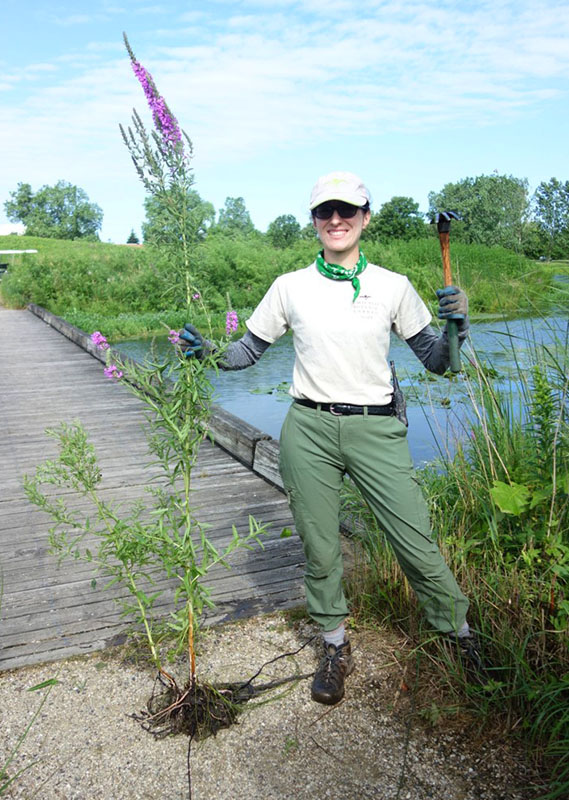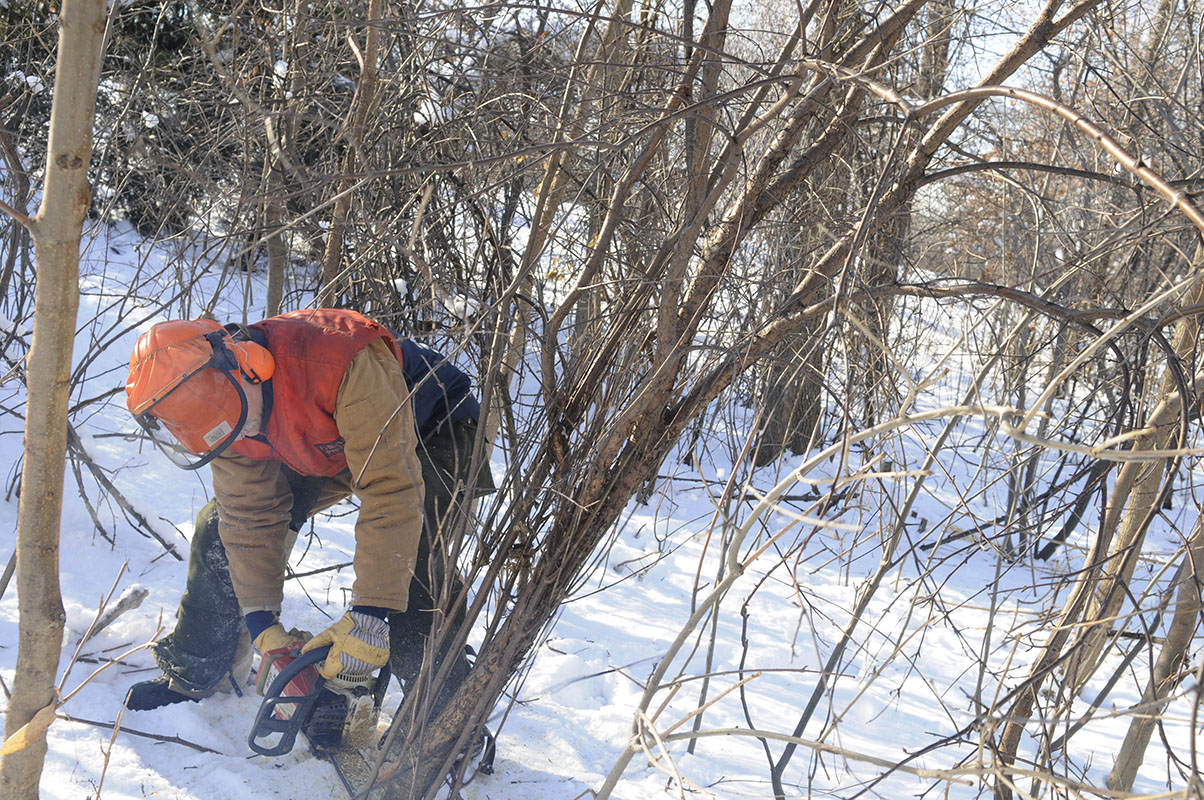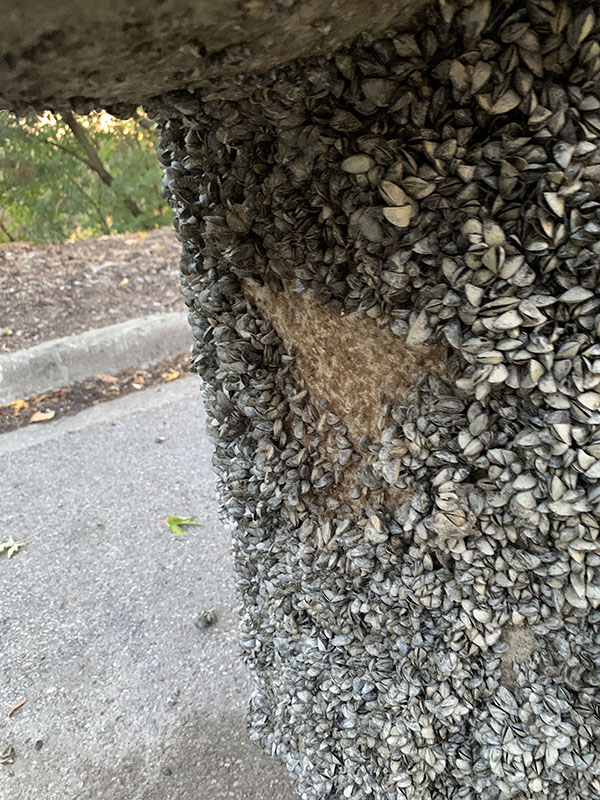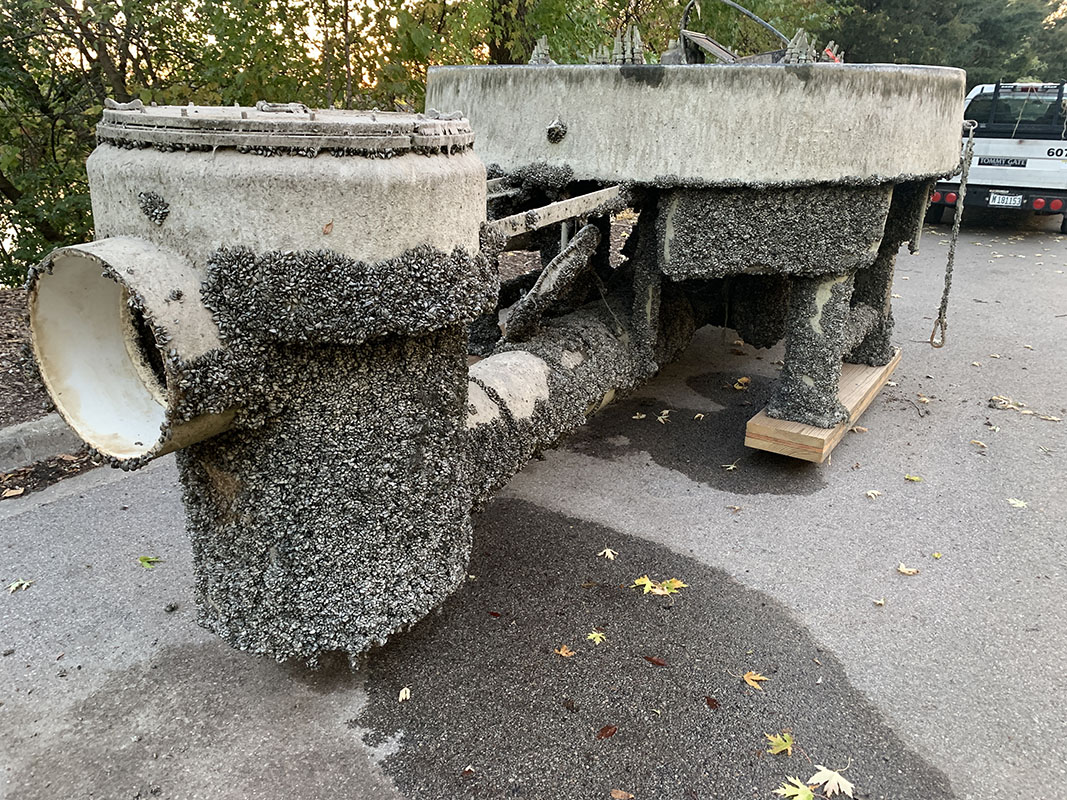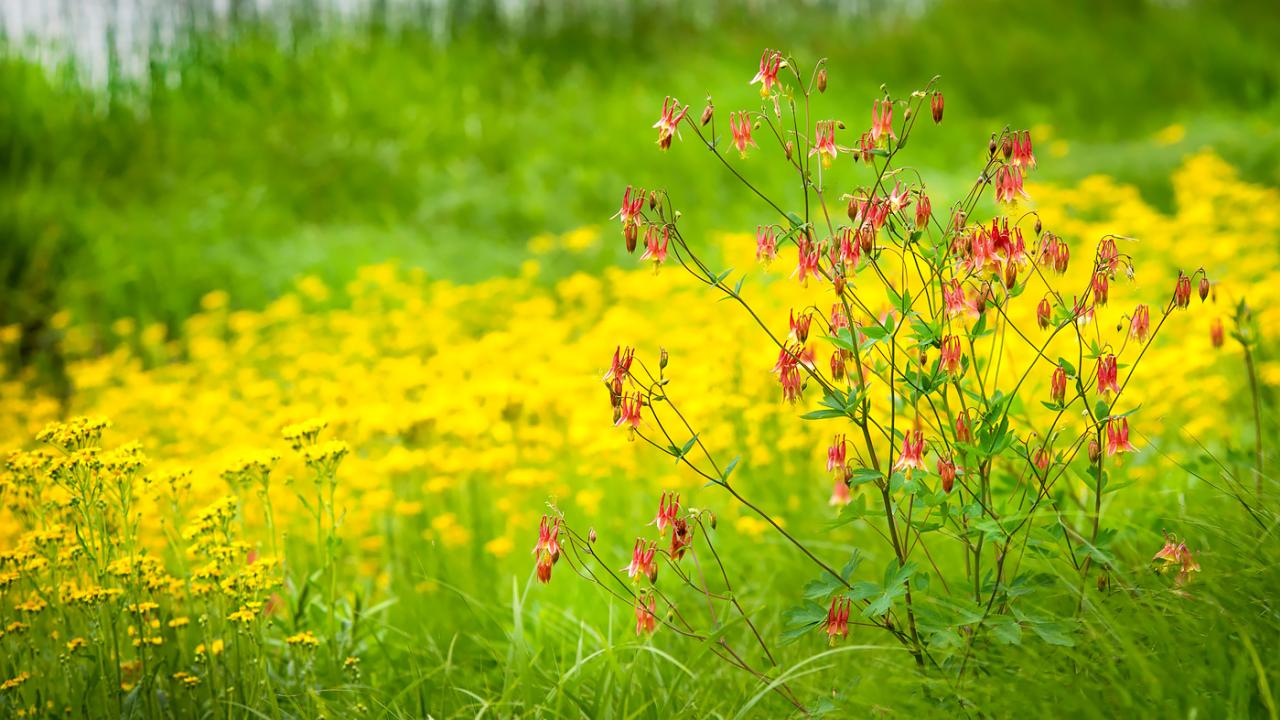

Plant Science &
Conservation
Garden Stories
Invasive Species: Understanding the Impact, Repairing the Damage
What do a pharmacist named Eugene, a cargo ship, and a home garden have in common? They all helped introduce invasive species that affect the Chicago area today.
Although invasive species are almost always new to an area, it’s not a plant or animal’s origin that makes them invasive—it’s their impact. Invasive species spread widely as they out-compete local native species for resources like food, water, light, and space, and can eventually damage entire landscapes.
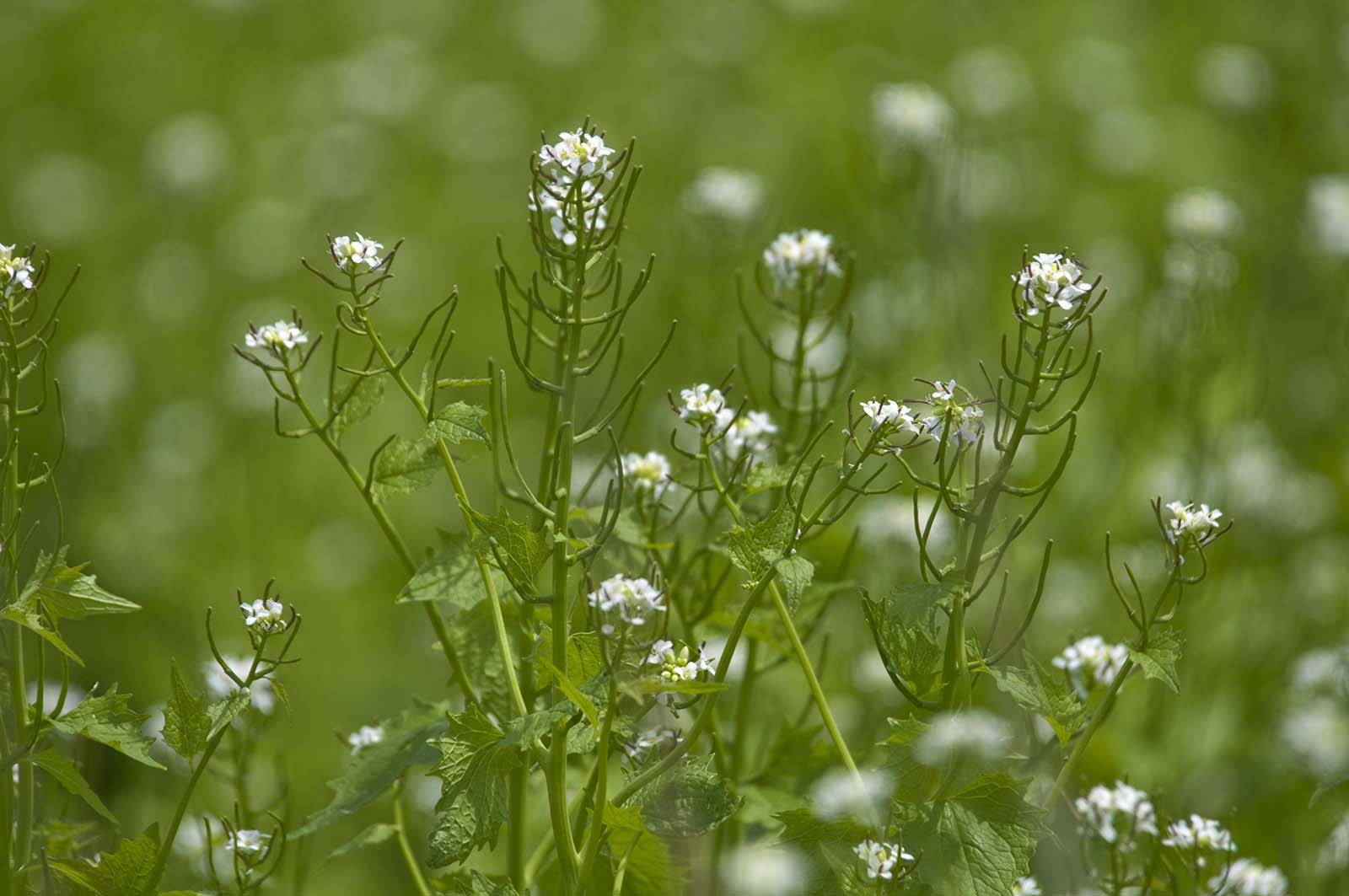
Introduced as a food source, garlic mustard (Alliaria petiolata) is now invasive in woodlands in the Chicago area and beyond.
Most of the plants and animals that people deliberately or accidentally move to new locations don’t cause major problems, but the ones that do can threaten water and food resources, human health, and economic production.
The global costs of invasive species now total $423 billion per year, according to a 2023 report from the Intergovernmental Platform on Biodiversity and Ecosystem Services (IPBES). The IPBES estimates that invasive species have contributed to 60% of global plant and animal extinctions.
“In our region, buckthorn has become so ubiquitous that many folks don’t know what a healthy woodland looks like,” said Kayri Havens, Ph.D., chief scientist of the Negaunee Institute for Plant Conservation Science and Action at the Chicago Botanic Garden. “It’s easy to assume the sea of green you’re looking at is beneficial, but buckthorn and other invasive plants can change soils, cause the loss of many other species, increase soil erosion, and much more.”
Removing invasive species at the Garden. Left: Introduced through cargo ship ballasts and as an ornamental plant, purple loosestrife (Lythrum salicaria) is invasive in wetlands. Photo by Jim Jabcon. Right: Introduced as an ornamental plant and privacy hedge, common buckthorn (Rhamnus cathartica) now accounts for 36 percent of all trees in the Chicago area.
Managing invasive species at the Garden
With 28 display gardens featuring plants from around the world growing alongside restored native woodland and prairie, the Garden is uniquely familiar with the efforts required to prevent new invasive species introductions and remove invasive species once they’re established.
The Garden implemented its Invasive Plant Policy in 2001 to guide decisions on which plants to remove from our collection and how to evaluate new plant species before adding them to display gardens.
“It is crucial we’re diligent about evaluating unknown non-native plants for potential invasiveness before sharing or recommending their use,” said Richard Hawke, Director of Ornamental Plant Research at the Garden.
Each year, Garden experts in conservation science, habitat restoration, and horticulture gather to revise the Invasive Plant List based on how they’ve seen plants behave in evaluations, display gardens, and natural areas, as well as observations shared by other botanic gardens and conservation organizations.
The Invasive Plant List guides the Garden’s removal efforts for more than 150 invasive plant species and offers non-invasive alternatives. It also incorporates a watch list of plant species that don’t currently pose a serious invasive risk in the Chicago area but may do so in the future—particularly as the climate changes.
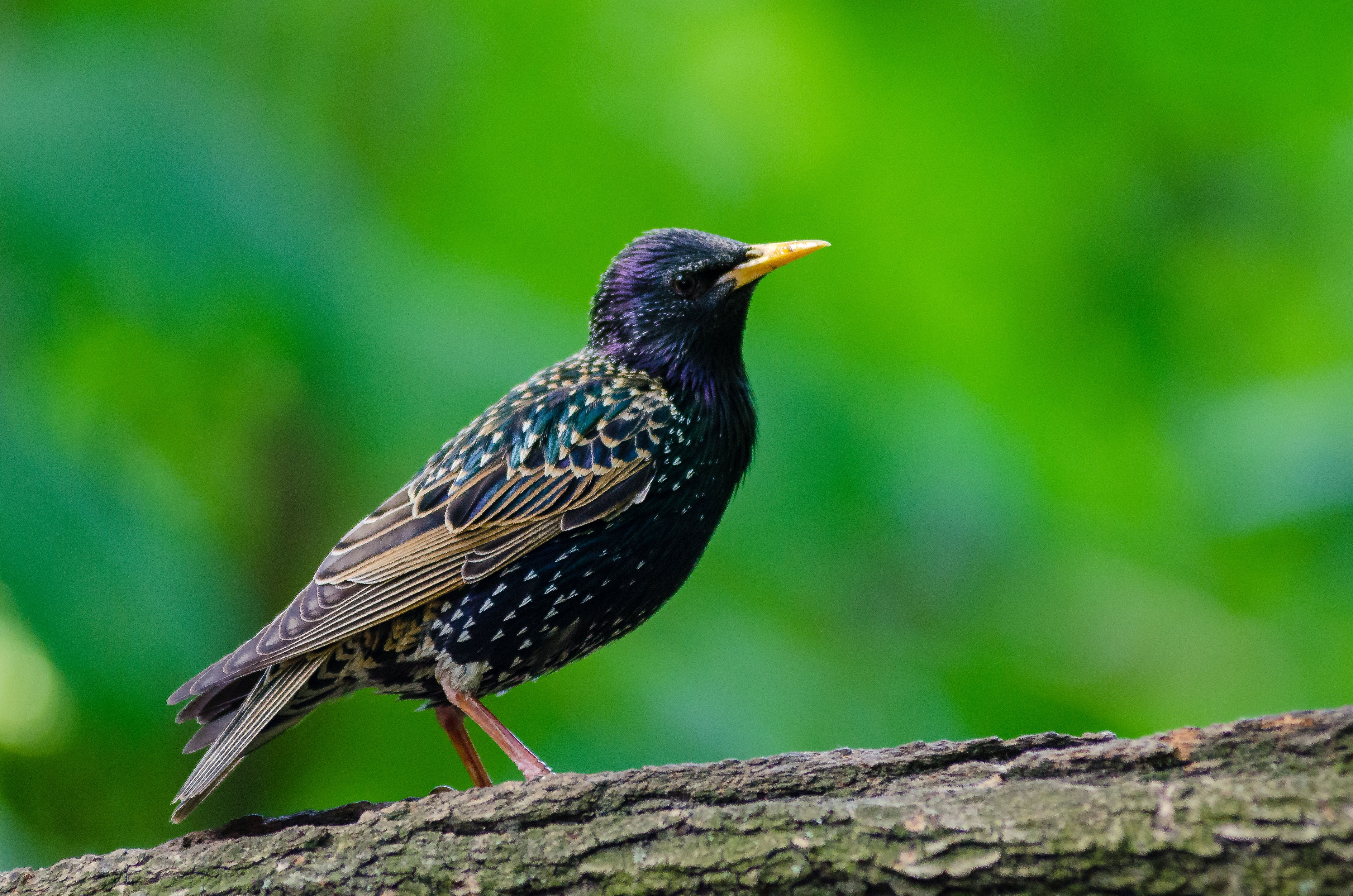
European starlings spread across North America after their introduction in 1890, but have seen major population declines since 1966, according to the North American Breeding Bird Survey. As humans continue to change landscapes and the climate, species once considered invasive may decline, while others that are not currently seen as a threat could become invasive.
Invasive species are a human problem
It’s easy to make plants and animals the villains of the invasive species story, but only if you ignore the role that humans play.
While there’s rarely a single person to blame—as in the case of Eugene Schieffelin, the pharmacist who intentionally released European starlings into New York City's Central Park in 1890—there are broader human shifts at the root of our invasive species problems.
Colonization—like the European settlement of what is now the United States—leads to the violent removal and oppression of Indigenous Peoples, along with new plant and animal introductions and major land use changes. Global trade, industrialization, and land development move plants and animals around while fragmenting and damaging our landscapes, making it easier for invasive species to establish.
Zebra mussels covering the Smith Fountain in fall 2023. Photos by Peter Nagle. Introduced through cargo ship ballast water into the Great Lakes, zebra mussels were first identified in the Skokie Lagoons in 2000 and are now present in the Garden’s lakes. Our science, horticulture, and maintenance staff work together to protect against zebra mussel damage to the Garden’s irrigation system and other pieces of infrastructure that depend on access to lake water.
But people can help repair the damage too.
At the Garden, ecologists remove and manage invasive plants in McDonald Woods, Dixon Prairie, and other natural areas, and horticulturists evaluate new plants and address invasive plants in display gardens. Garden scientists study the impacts of invasive species and work with the Forest Preserves of Cook County and other land managers to help restore native woodlands, prairies, and wetlands.
“The approach the Chicago Botanic Garden is taking on invasive species is very proactive,” said Havens. “We watch our collections carefully, document and remove plants that become worrisome, and share that information with colleagues at other botanic gardens and in the green industry. With monitoring and collaboration, we hope to prevent the next buckthorn from establishing in our region’s natural areas.”
You can make a difference by becoming familiar with common invasive plants—like buckthorn (Rhamnus species), garlic mustard (Alliaria petiolata), winged euonymus or burning bush (Euonymus alatus), and Callery pear (Pyrus calleryana)—and removing them from your property or as a volunteer in the Forest Preserves of Cook County.
When adding new plants to your yard or container garden, do a quick web search or check against the Garden’s Invasive Plant List to make sure you’re not inadvertently planting invasive species—many are still legal to sell in Illinois. And don’t forget to support native plants in your garden.


